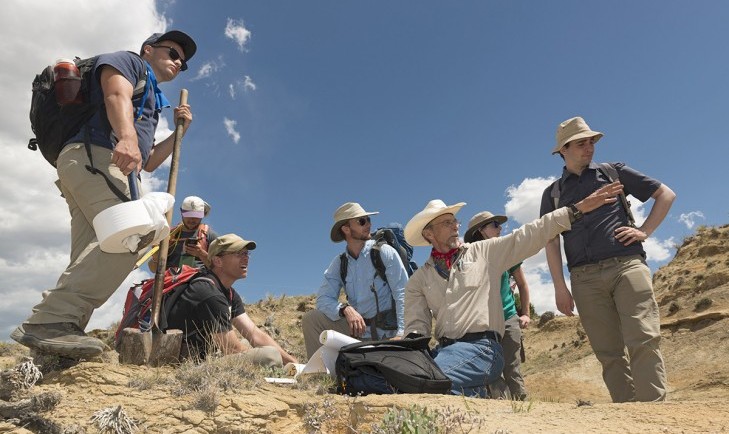
The Western Governors' Association keeps you updated on news of the West. Here are top stories for the week starting Nov. 4, 2019. Photo courtesy of the Denver Museum of Nature and Science.
A series of “micro earthquakes” struck Ventura County, California early on Thursday (Nov. 7) morning and continued until just before 7 a.m. PT. The cluster, whose largest quakes registered magnitudes of 3.3 and 3.4 respectively, followed another small earthquake (3.5 magnitude) in Ridgecrest. No property damage or injuries were reported.
On Nov. 3, a 4.2 magnitude quake shook northern California’s wine country, the same location where firefighters were battling the Kincade fire, KTLA 5 reports. That blaze has since reached 100% containment.
Gov. Gavin Newsom, to better prepare Californians for future seismic activity, on Oct. 17 introduced an early warning system that would provide residents with a smartphone notification seconds before an earthquake begins. That same day, which was the 30th anniversary of the devastating Loma Prieta earthquake, USA Today reported that Salinas and the San Francisco Bay Area were hit with 4.7 and 4.5 magnitude earthquakes respectively.
Although the recent quakes in California have been minor in nature, scientists warn that a more serious seismic event could be on the way. The 7.1 magnitude Ridgecrest earthquake in July – the largest to strike southern California in nearly 20 years – caused the previously dormant Garlock Fault to shift slightly. According to USA Today, this creates the possibility for an earthquake registering up to 8.0 on the Richter scale, although experts maintain that this is a fairly unlikely scenario.
 Historic Fossil Find: Approximately 66 million years ago, an asteroid crashed into Earth, wiping out practically all non-avian dinosaurs. What occurred next has long been a mystery, but a team of paleontologists in Colorado have uncovered the most complete record of that period. “We provide the most vivid picture of recovery of an ecosystem on land after any mass extinction,” Tyler Lyson, a paleontologist at the Denver Museum of Nature and Science, told The New York Times. Learn more.
Historic Fossil Find: Approximately 66 million years ago, an asteroid crashed into Earth, wiping out practically all non-avian dinosaurs. What occurred next has long been a mystery, but a team of paleontologists in Colorado have uncovered the most complete record of that period. “We provide the most vivid picture of recovery of an ecosystem on land after any mass extinction,” Tyler Lyson, a paleontologist at the Denver Museum of Nature and Science, told The New York Times. Learn more.
Withdraw from the Water Bank: A program in San Diego, California will create a “capacity bank” for water and sewer systems in the city, allowing local companies to purchase excess capacity from old factories at a discount. According to the San Diego Union-Tribune, the project, unanimously approved by the city council at the end of October, is expected to be popular among water-dependent businesses such as breweries and biotech firms. Here’s how the program will work.
Preventing Undercounting: With the 2020 census on the horizon, predominantly rural states such as New Mexico are again faced with the difficult task of counting residents in remote areas. According to Governing, nonrespondents cost the Land of Enchantment $780 million of lost revenue in the last census, prompting Gov. Michelle Lujan Grisham to create a statewide commission to ensure better results in 2020. Read how she plans to do it.
Mental Health in the West: According to KUNC, a new report has revealed that youth suicide rates in the Mountain West region are markedly higher than the national average. Between 2007 and 2017, the rate of Americans aged 10 to 24 who took their own life increased 56%. In contrast, rates in Colorado spiked 86% during the same period, and rates in Utah and Idaho jumped 93% and 73% respectively during similar time frames. Find out what experts think may be responsible.
Get the latest news about the West and its governors by following the Western Governors' Association on Twitter, Facebook and LinkedIn.